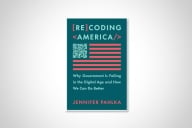You have /5 articles left.
Sign up for a free account or log in.
What happens when students put off buying textbooks?
Any seasoned instructor knows. They fall behind academically. What starts as a mostly economic issue quickly becomes an academic issue. Then, when they fail or withdraw, they may lose financial aid eligibility for failing to maintain “satisfactory academic progress,” and the small financial issue that become a large academic issue becomes a larger financial issue. The snowball keeps rolling.
It doesn’t have to. What if textbooks were free?
“Free community college” would require major legal and financial changes, as well as some unusually farsighted political leadership. Free textbooks just require a little ingenuity. We can do this.
Open Educational Resources are free (or nearly free) alternatives to commercially produced instructional materials, such as textbooks or lab manuals. They’re often supported with foundation funding, with the goal of reducing economic barriers for students. Typically they’re in electronic form, though sometimes it’s possible to get hardcopy versions for only the cost of printing.
OER come in several flavors. My favorites are the ones that constantly update in a sort of crowdsourced, iterative process. Paper textbooks are stuck with the errors that were there when they went to press. Yes, they can do ‘errata’ sheets, but those have about as much impact as ‘corrections’ days later in the newspaper. Electronic resources are much easier to update or correct effectively. And because they’re born electronic, and with an explicit goal of accessibility, they tend to be accessible to students with disabilities from the outset. Accessible design beats retrofitting anytime.
I’ve seen and heard OER presented as a money-saver, and that’s true. But it rarely comes up in discussions of retention and improving student success. I think that’s a mistake.
Over the past few years, the quality and range of OER options have improved dramatically. For introductory level, high-enrollment classes, it’s often possible to find materials that compare favorably
with commercial textbooks. Given that textbooks often cost $200 apiece or more, the difference adds up over the course of a degree program. Tidewater Community College, in Virginia, has established an all-OER degree program in business administration; that tells me it can be done.
Devices are an issue. Any electronic resource has to be read on some sort of device. Most students have phones, but the screens are too small to lend themselves to extended or complicated material. (Just imagining trying to study a diagram of the nervous system on a phone screen makes me shudder.) Larger devices work better, but they aren’t cheap. Amortizing the cost over several semesters makes it better, but for a part-time or visiting student, it may come close to a financial wash. I’d love to hear from wise and worldly readers at community colleges who have found fair and effective ways around the device question.
Still, I can’t help but think that the device issue is much more solvable than, say, the political opposition to free community college. And the payoff isn’t merely economic. Students who have class materials from day one are likelier to succeed academically than students who don’t. This is an economic issue, but it’s also a retention issue. And it’s one we can solve without waiting for the political winds to shift.



